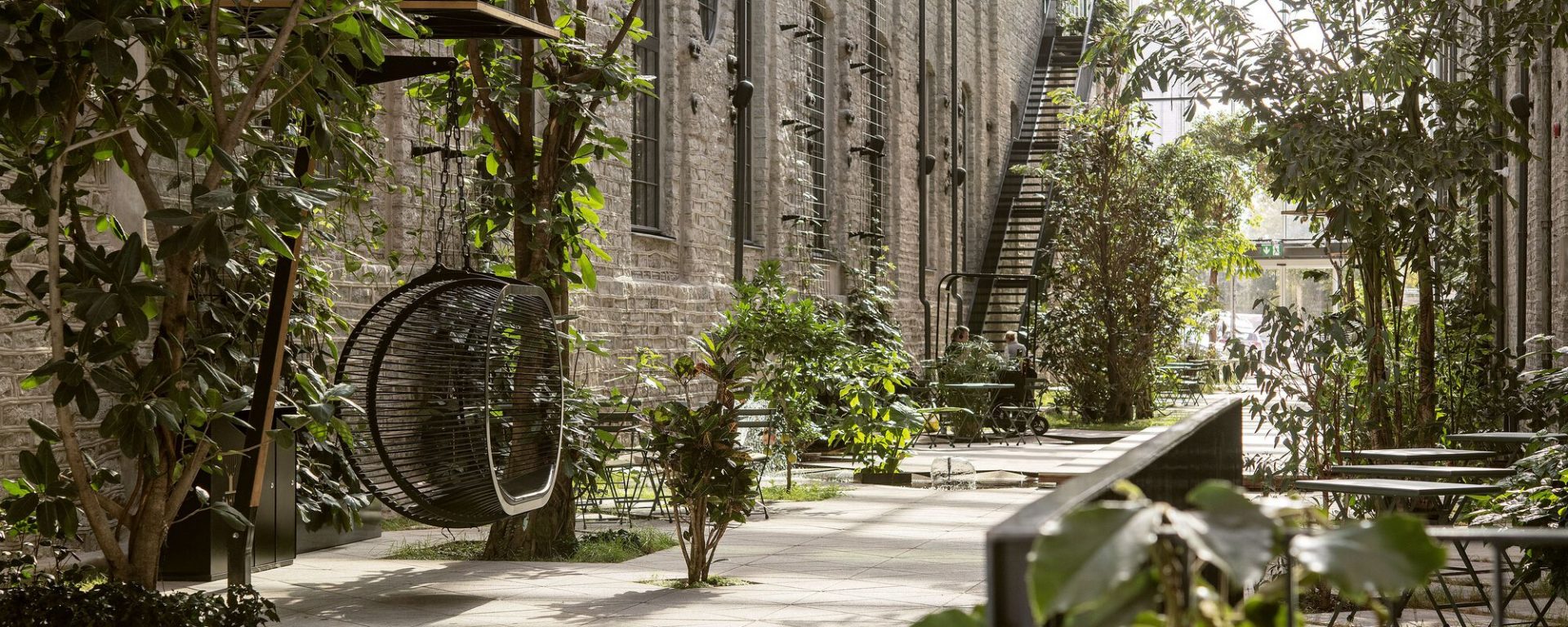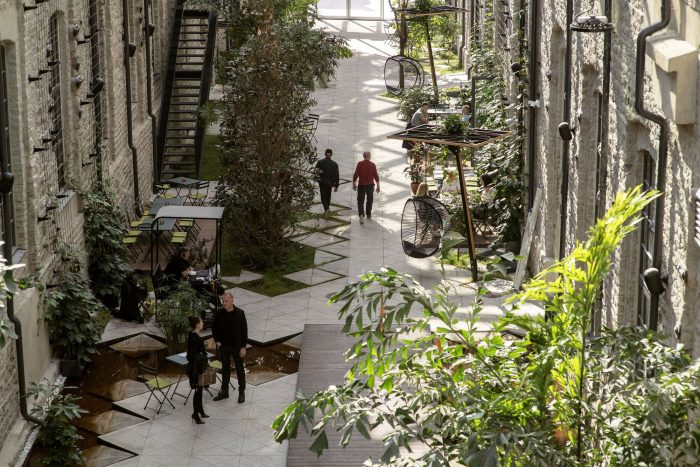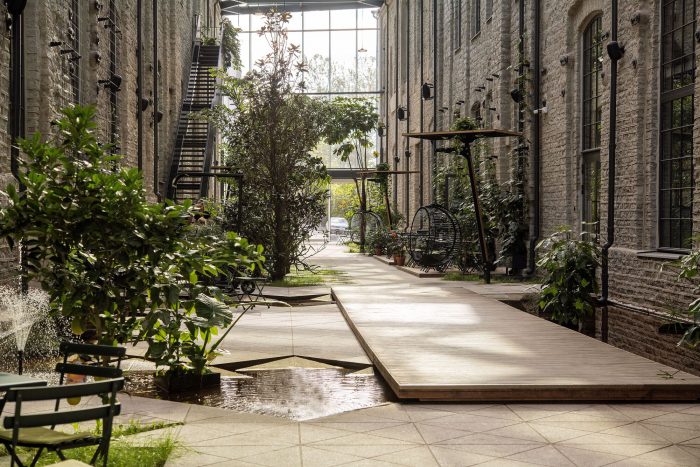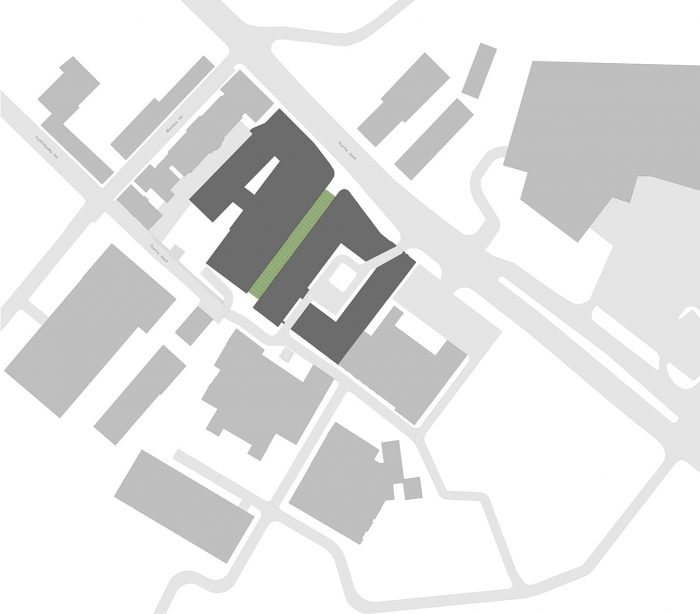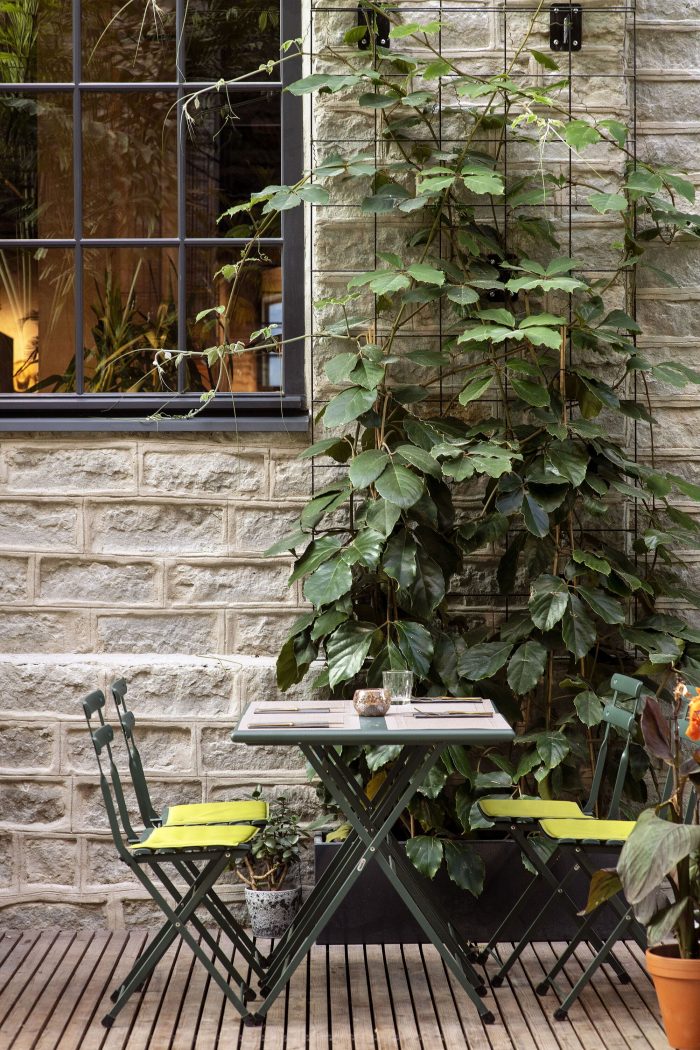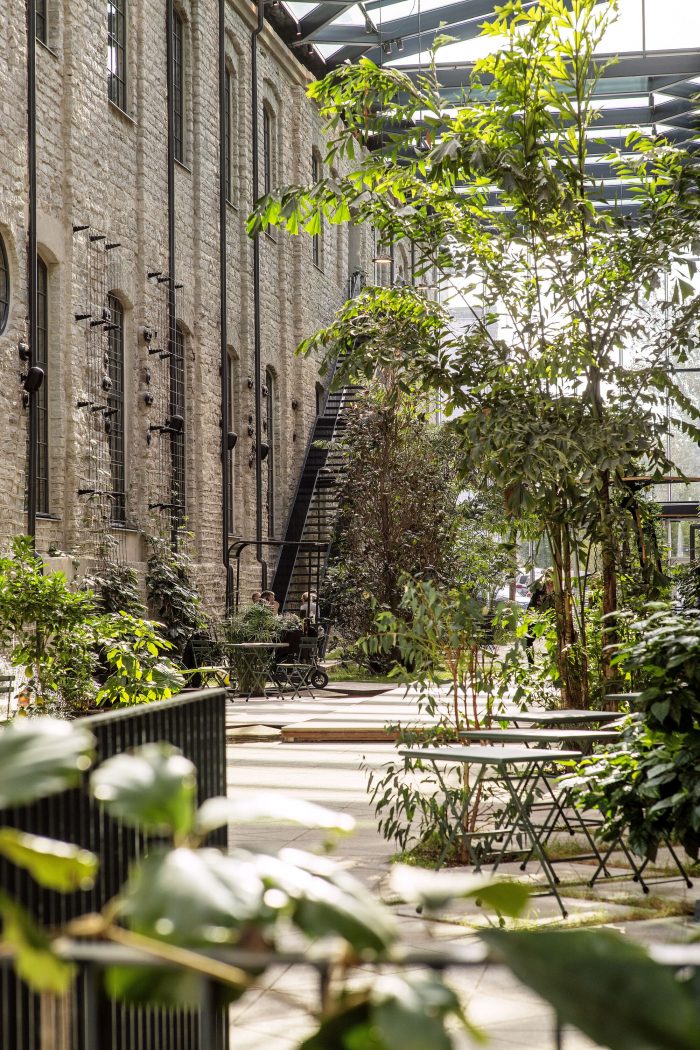历史上的纤维素和造纸厂区作为塔林中心的Fahle商业区的重生,其特点是百年工业建筑的巨大石灰岩墙、现代玻璃体和青翠的植被之间的对话。
The rebirth of the historical cellulose and paper factory area as Fahle business estate in the center of Tallinn is marked by dialogue between the massive limestone walls of century-old industrial buildings, modern glass volumes, and verdant vegetation.
该建筑群主要建于1908年至1922年,在20世纪90年代之前一直是一家造纸厂及其各部门的办公场所。在21世纪,它正经历着从工业空间到后工业空间的转换。
Built mostly between 1908 and 1922, the block of buildings accommodated a paper factory with its various departments until the 1990s. In the 21st century, it is undergoing conversion from an industrial to a post-industrial space.
法尔画廊街是在这种转换中诞生的有盖通道。它以前是工厂建筑之间的一条狭窄的街道,后来被墙围起来,完全关闭,2021年重新开放,成为一个有玻璃屋顶、有热带植物的绿洲,即使外面全是冰雪,也没有冬天。
Fahle Gallery Street is a covered passage born out of this conversion. Formerly a narrow street between factory buildings, then walled up and closed altogether, it was reopened in 2021 as a glass-roofed, tropically vegetated oasis that knows no winter, even when it is all ice and snow outside.
旧的石灰石墙的坚固性现在被细长的钢筋所补充。上面的绿色色调的太阳能控制玻璃是在历史悠久的工厂群的新艺术风格的屋顶结构上。玻璃屋顶的横梁直接由新的混凝土大梁支撑,没有任何柱子,这些大梁建在现有建筑的檐口上。屋顶的坡度和高度各不相同,以便将墙壁上的所有新艺术风格的正面图案纳入内部空间。通道两边的建筑通过一座横跨阁楼画廊的空隙的桥梁相互连接成一个整体,实际上也是通过整个室内街道。
The robustness of old limestone walls is now seconded by slender additions of steel. The greenish-toned solar control glass up above rests on the Art-Nouveau-inspired roof structures of the historical factory complex. The beams of the glass roof are supported directly, without any columns, by new concrete girders built into the cornices of the existing buildings. The slope and height of the roof vary in order to include all the Art Nouveau frontispieces on the walls in the interior space. The buildings on both sides of the passage are interconnected into a whole by a bridge crossing the airspace of the lofty gallery, and actually by the entire indoor street.
通道两边是办公室、商店、餐厅和延伸到绿洲的露台。轻盈的露台家具在绿色的变化中营造出街道般的氛围,而公园特有的元素和室内外空间之间几乎无法察觉的边界唤起了人们心境的转变,使画廊具有独特的梦幻般的氛围,成为特殊活动或只是聚会的最爱。
The passage is lined with offices, shops, restaurants, and terraces extending into the oasis. The light and airy terrace furniture in variations of green create street-like vibes while elements characteristic of a park and the barely perceivable borders between the indoor and outdoor spaces evoke a shift in the frame of mind, giving the gallery a distinctive dreamy atmosphere, which has become a favorite for special events or just meetups.
法尔庄园的景观建筑在概念上受到了自然接管城市空间的启发。奢华的绿色植物在大多数裂缝中都找到了立足之地。树木和灌木丛下以及白色花岗岩板路面的接缝处都有草生长。自然回归的概念在整个法尔庄园的发展中反复出现,浓密的石灰岩环境被看似野生的植被所激活。
The landscape architecture of Fahle estate has been conceptually inspired by the idea of nature taking over the city space. Luxuriant greenery has found a place to establish itself in most cracks. There is grass growing under the trees and bushes and in the joints of the white granite slab pavement. The concept of nature coming back recurs throughout the development of Fahle estate as a whole, where the dense limestone environment is animated by the seemingly wild vegetation.
Architects: LUMIA, studio ARGUS
Area : 740 m²
Year : 2020
Photographs :Terje Ugandi
Manufacturers : EMU Group, Schüco ADS 65, Schüco FWS 50 SG
Lead Architects : Toomas Adrikorn, Margit Aule
Engineering Consultant : Innopolis Engineering
Landscape Architecture : KINO maastikuarhitektid, Mirko Traks, Juhan Teppart, Uku Mark Pärtel, Kristjan Talistu, Karin Bachmann
City : Tallinn
Country : Estonia

